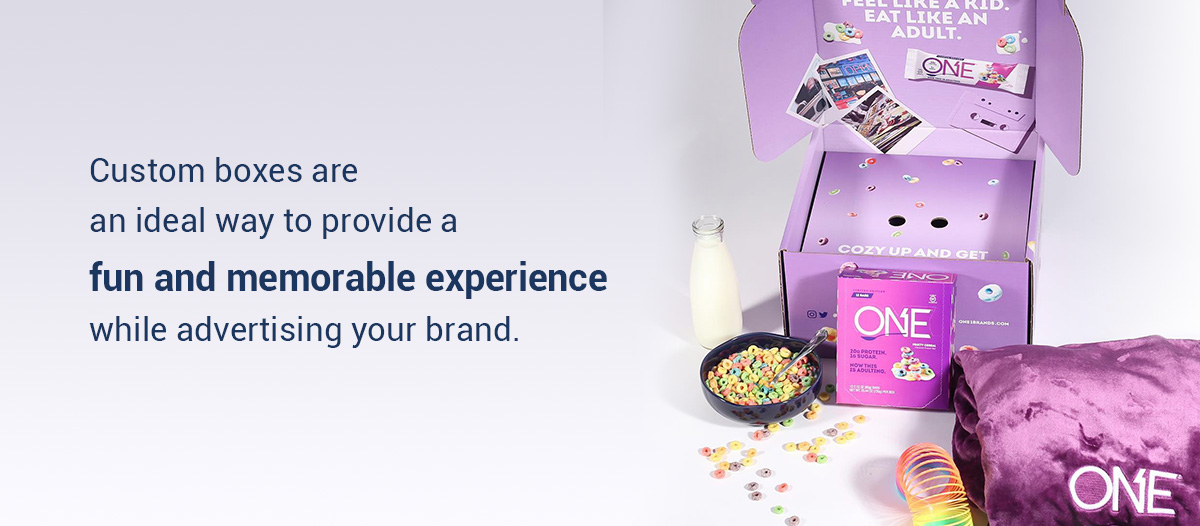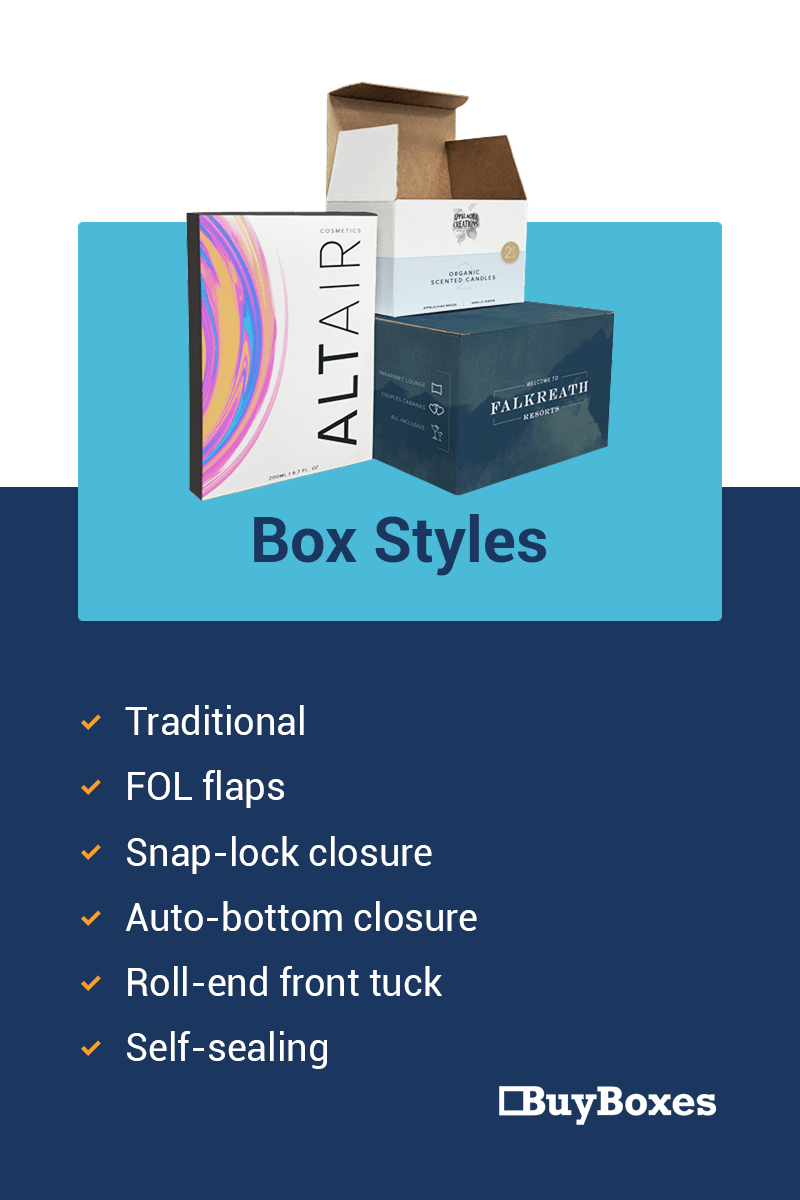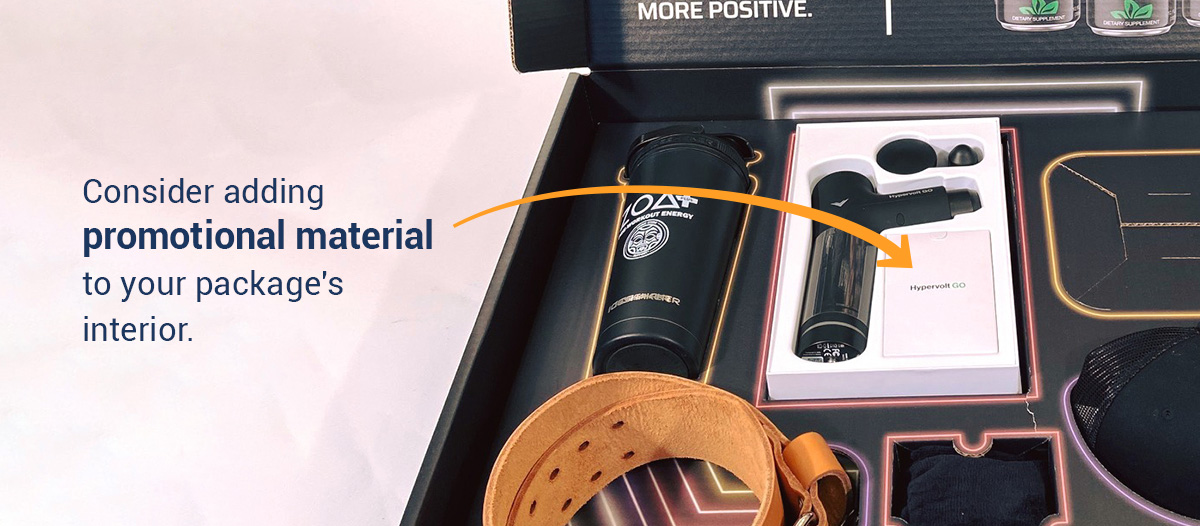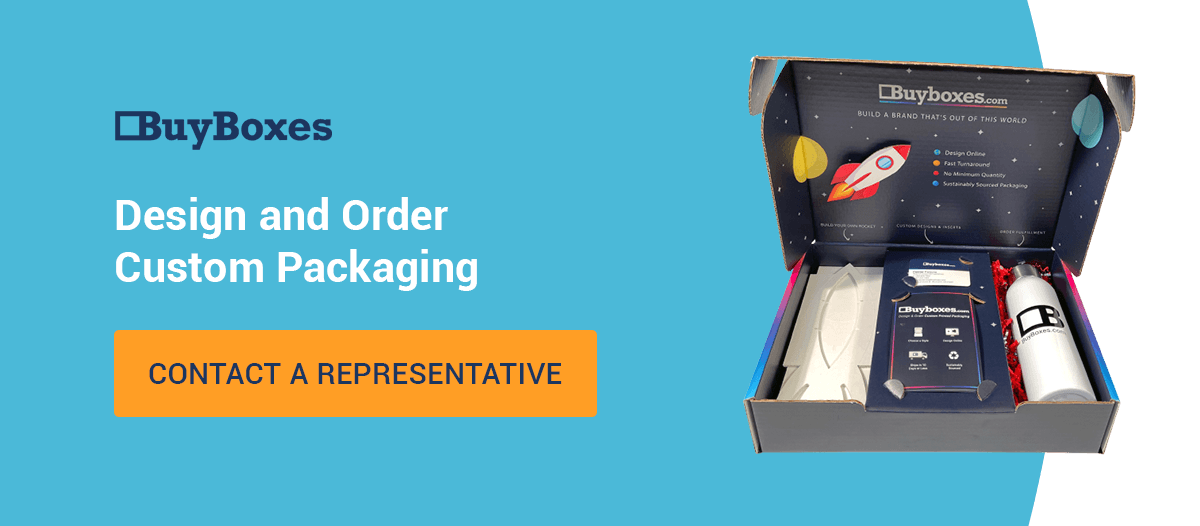Creating the Perfect E-Commerce Box
Designing the best e-commerce packaging for your customers can form a lasting bond with shoppers and increase profits and retention. Whether you want to excite people as they open the box or learn how to fill the package with sustainable materials, our guide to e-commerce boxes can help. Understanding the steps to create an aesthetically pleasing e-commerce box can optimize your services and increase your sales and ROI.
What Is E-Commerce Packaging?
E-commerce companies ship products to customers who purchase the item online. The box arrives directly on the customer’s doorstep without third-party interactions besides the mail service. Today’s customers appreciate the benefits of buying a product online without leaving their homes. The convenience makes it a popular choice among all demographics.
Due to e-commerce’s popularity, creating a fun and exciting unboxing experience is essential. You want to foster trust through reliable shipping boxes and services. Shipping boxes are also an excellent way to showcase your brand creativity and unique identity that stands out among other companies. With the proper packaging, you can show customers why they should continue to choose your brand over others.
E-commerce packages are fully customizable with colors, logos and packaging slips to fit your brand image. You will also want to consider aspects like protection and durability, as the product needs to be safe during transit, handling and shipping. However you choose to design your packaging, creating something special will positively influence customers and benefit your business long-term.
The Importance of E-Commerce Packaging
E-commerce packaging is essential when creating a lasting impression with customers. You want shoppers to feel your brand is trustworthy enough to buy from again and again. With reliable packaging materials and an aesthetically pleasing box, shoppers will prefer your brand over the competition.
1. Protection
Protecting your product from damage during transit is one of the most critical parts of e-commerce shipping. The packaging materials and fillers are essential to shipping and distributing a cushioned product that won’t crack or break.
Protection with secure packaging materials also makes customers happy. When the item arrives without damage, they know your business is reliable. Ready-to-use items add value to your business, meaning fewer returns or refunds due to faulty or broken products. An excellent first impression is crucial for building a long-lasting brand and retaining customers.
2. Marketing
Creating a marketable product can help your company increase its return on investment. Custom boxes are an ideal way to provide a fun and memorable experience while advertising your brand. A stellar design will increase your brand’s equity and help your company stand out.
With a custom design like no other, you can distinguish your product from the competition. Customers can also build anticipation for their order and establish a connection with your brand through attractive colors, custom logos and unforgettable images and inserts.



3. Customer Experience
The customer experience is also a critical part of building custom boxes. As a business that sells online, you’ll have fewer touchpoints with customers, so it’s essential to think about how people will feel when they receive and open the package.
Without the ability to promote products through in-person or hands-on experiences, custom packaging can help set your business apart from the competition. The box becomes an extension of the brand, ensuring customers remain satisfied with their purchase. Custom boxes can increase retention and loyalty while encouraging consistent company growth.
How to Create E-Commerce Packaging — A Step-by-Step Guide
When developing the correct custom box and packaging ideas, you’ll want to explore the options for package types, printing methods, void-filling materials and more. From personalized stickers to custom inserts, e-commerce packaging will benefit from a careful eye and an aesthetic design to match your brand. Here are 12 steps to creating successful e-commerce packaging.
1. Packaging Type
Choose between different packaging types, depending on the product you plan to ship. Between delicate, fragile products or heavy, bulky items, a well-constructed package supports and protects your product while effectively advertising your company. Types of packaging include poly mailers, bubble mailers and corrugated boxes.
Poly mailers are envelopes made of self-sealing polyethylene. A poly mailer is excellent for shipping lighter, more flexible products. The envelopes come with waterproof and lightweight features, making it easy to send large numbers of products at once. You can also order poly mailers in custom sizes to fit your needs.
A few challenges present themselves when using poly mailers. You’ll find printing custom logos or lettering on your envelopes difficult. Poly mailers come in various patterns and colors, but you can still find creative ways to showcase your brand image. Remember that the envelopes may not be curb recyclable. You will have to search for specific poly mailers made with eco-friendly material.
Bubble mailers are envelopes with self-sealing paper or poly material. Unlike basic poly mailers, bubble mailers have a bubble wrap lining inside the envelope. The bubble wrap can protect products during transit, especially delicate or lightweight items. For example, if you plan to ship jewelry, books or small electronic devices, you’ll want to invest in light, weather-resistant bubble mailers.
While bubble mailers offer many print options, they remain vulnerable to excessive moisture or rain. Keep this in mind when ordering paper bubble mailers rather than plastic, as plastic might resist weather more effectively. Most plastic bubble mailers are not curbside recyclable.
Finally, corrugated boxes offer a wide range of styles, customization and sizes for your brand. The corrugated box is the way to go if you want a packaging type that offers excellent product protection, various pricing options and an overall great customer experience. Corrugated boxes can ship almost any kind of product, large or small.
Most corrugated boxes contain post-consumer waste, making them a sustainable choice for custom designs. They also offer the most variety and options for custom printing, labeling and color choices.
2. Box Styles



Choosing a box style depends on the product you plan to ship. Different box styles include the following.
- Traditional: Traditional boxes use four flaps on the top and bottom, which meet in the center.
- FOL flaps: Full-overlap flaps are for heavy products. The flaps reach the box’s opposite side and overlap to create stacking strength and damage resistance.
- Snap-lock closure: The snap-lock box type uses secure bottom flaps.
- Auto-bottom closure: Auto-bottom box types use interlocking bottom flaps.
- Roll-end front tuck: This box style offers excellent protection. Many subscription box services use them. You can find styles with dust flaps if necessary.
- Self-sealing: Consider using a self-sealing box with a tape strip for easy packing, sealing and shipping.
3. Material Thickness
A box’s material thickness is a factor if you ship delicate or bulky products. Use a box with an E-flute thickness if you ship items from the retail, food or beauty industry. Use a box with a B-flute thickness if you often send items like furniture, shoes or industrial products.
4. Printing Methods
When creating a custom box, your company has two printing options — digital and offset.
Digital printing methods transfer documents to a substrate and later a device that can accept graphics and text outputs. The image or text gets inked directly onto your packaging material. Try digital printing if you often ship orders in low quantities and want a cheaper option. You can save time and money while keeping artwork simplistic and eye-catching. Digital printing is better for low-quantity shipments.
Offset printing uses a printing press technique to transfer ink from plate to roller to paper. You can find offset printing in newspapers, stationery, custom boxes and brochures. This method is more expensive, but offers excellent quality. If you plan to include custom inserts or inner box printing, use offset printing techniques.
5. Void-Fill Materials
Void-fill materials fill the space inside the custom box or package. The material prevents the product from moving around during transit and protects the item from damage. Consider adding the following materials.
- Air pillows: Air pillows can come prefilled, making them a fast and easy solution for good cushioning and protection. Remember that recipients must pop and dispose of them after use, and they are not curbside recyclable.
- Packing peanuts: While traditional packing peanuts are not environmentally friendly, biodegradable packing peanuts are an excellent alternative for those who need void materials customers can easily dispose of or dissolve in water.
- Bubble wrapping: You can find bubble wrap in sheets or rolls with various thicknesses and sizes.
- Packing paper: Packing or crinkle paper comes in different colors and patterns, making products safe while promoting your brand image.
6. Promotional Material
Consider adding promotional material to your package’s interior. Promo pieces can build a lasting relationship between customers and your brand while providing valuable and relevant information. For instance, you could add elements like a printed newsletter, custom note or step-by-step instructions for product usage.
Custom notes can look like postcards using the customer’s name or a short handwritten message thanking the shopper for their business. Any added educational material can include directions or unique recommendations.
7. Packing Tape
Many companies choose to tape their boxes with creatively designed, patterned and styled tape, adding to the overall customer experience and improving the packaging look. When purchasing packing tape, consider a few areas like the package’s surface, the product’s weight and the seal at the box’s bottom. You’ll also have to decide whether to apply the custom tape by hand or use a machine. Think about the package’s possible weather or temperature exposure and sustainability. Your custom box can catch customers’ eyes and improve business retention with suitable packing tape to fit your brand images, patterns and colors.
8. Box Seals
Box seals are stickers or precut labels that seal the edges together on top of your package. They offer excellent time-saving benefits and professional aesthetics for your design. Avoid supply overuse when purchasing box seals and labels, and buy seals in bulk to make them worth your investment. Look for circular, rectangular or square shapes and designs made from kraft, white paper or acetate material.
9. Packing Slips
Packing slips act as an effective marketing tool when inserted correctly. Place the receipt and packing slip with relevant information closer to the bottom of the box, so customers can experience the product before learning more details. You can also customize your packing slips to fit the box’s aesthetic and design. Use your logo or product images with purchasing information and one-of-a-kind items. For example, include a QR code with step-by-step product usage instructions, or print a coupon code on the packing slip. Packing slips encourage repeat purchases while keeping customers happy and excited about their products.
10. Inserts
Custom box inserts help protect your product from damage while organizing the package’s contents. Many businesses use cardboard or foam to keep delicate products from jostling around. A custom box insert will also help make the inside of your box attractive while improving brand identity. Whether you choose to use plastic, paperboard or foam inserts, the material can come in custom colors, have printed information to help customers or advertise your brand image as soon as they open the package.
11. Samples and Gifts
Many customers appreciate adding extra samples or gifts along with their products. For example, you could add stickers, coupons, small products like makeup samples or a keychain. Samples of your other products are beneficial, as they can be a pleasant surprise and better promote your business.
Cross-selling introduces new products you might want to draw attention to. Giving a small gift or sample can prime customers for your product and encourage them to return for more.
12. Artwork Design
Developing the artwork is one of the last steps to finalizing your e-commerce box. First, think about your planned color scheme. The possibilities are endless. What are your brand’s standard colors and themes? Do you gravitate toward pastels, or do you tend to use neons or metallics? Whatever color palette you offer, ensure your packaging fits the motif. It will create a cohesive brand narrative and work as great advertising for your business.
If you’re creating a new brand color scheme from scratch, the psychology of color should come into play. For example, many companies use red for food products to evoke hunger in consumers. Depending on what you sell, other colors like blue or green could denote cleanliness or natural products.
Finally, think about where you want to place your brand logo based on its design. The logo should be visible to the customer when they receive your package. Consider printing it on the box’s interior and exterior. You can also design a logo to fit your color palette and brand image. Ensure it stands out and is large enough for people to see and remember. An eye-catching and memorable logo helps increase customer retention.
Design and Order Custom Packaging at BuyBoxes
BuyBoxes allows customers and businesses to order and create custom-made packages and boxes for their unique needs. Whether you plan to advertise products or want to improve your brand image, our online studio can help you find the perfect colors, logos and images for your company. Order custom boxes in bulk or use our package-on-demand services without hidden fees or minimum order requirements. Contact us today to speak to a representative, or call us at 508-372-8836.



